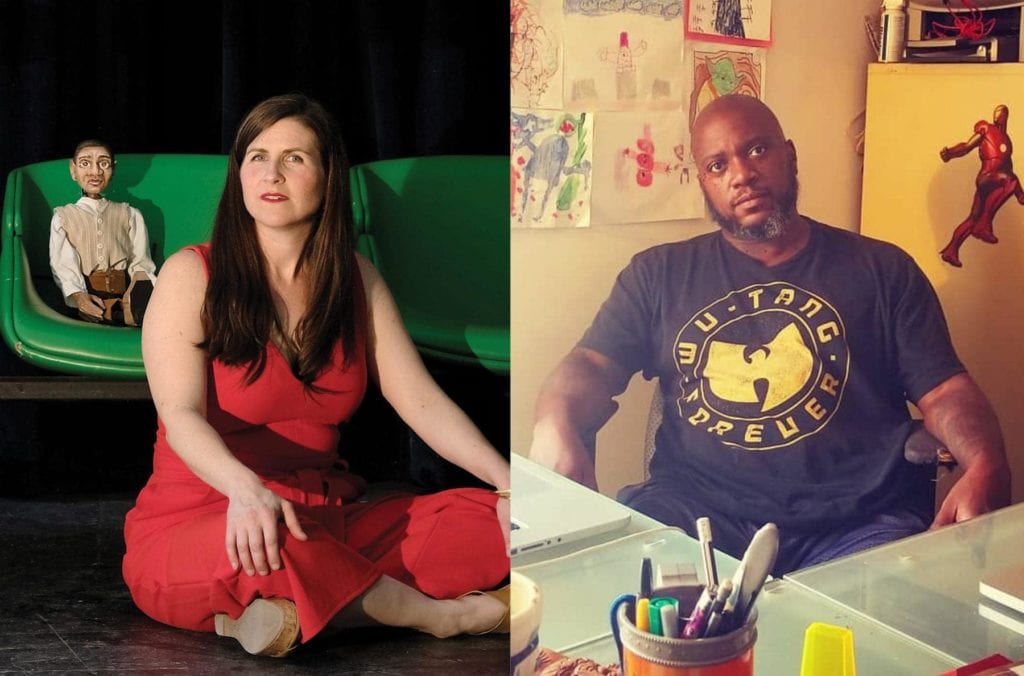


Award-winning puppet artist and Associate Professor of Theater Studies at Duke, Torry Bend, collaborates with Howard L. Craft, the lauded poet, playwright, and arts educator who created the first African-American superhero radio serial, The Jade City Pharaoh, to reimagine an iconic American cartoon.
Bend, who premiered Love’s Infrastructure at Duke Performances in 2014, joins forces with Craft on Dreaming: a new theatrical work that investigates the legacy of influential artist Winsor McCay and his famed comic strip, Little Nemo in Slumberland, which ran from 1905 to 1911 in The New York Herald.
Dreaming confronts overtly racist imagery in McCay’s work, using puppetry to tell the story of McCay’s cast of characters on the event of his death; the characters must reconcile the fame they each found as stereotypes. Having first appeared as a work-in-progress at Sheafer Lab Theater, the final production of Dreaming debuted at the von der Heyden Studio Theater on November 22-24, 2019.
When Torry approached me about a possible collaboration, I had never heard of Winsor McCay — even though I’ve been a fan of comics and comic art for the majority of my life. As a young kid, I was in love with the amazing universes of Marvel and DC comics. As a teenager, my addiction to hip-hop culture led me to a love of graffiti art, to the point of creating my own tag.
I was amazed by the scope and beauty of McCay’s work when I first viewed it. It was strikingly familiar, and I would later learn that many of the techniques used by the comic book artists whose works I admired were heavily influenced by McCay’s ideas. There was another familiarity with the work, one which did not give rise to feelings of admiration, but to feelings of disappointment, though not surprise.
Surprise came as a youngster watching Bugs Bunny being chased by African cannibals with bug eyes, big lips, and bones in their noses and hair. Surprise came watching Tom and Jerry being chased by Mammy Two Shows: the big black mammie, whom we never saw in full, just her pink bedroom shoes and black feet as she yelled in broken English for Thomas to “catch that mouse” while shrieking in hysteria.
So, while McCay’s racist depictions of African Americans didn’t surprise me, what did was the lack of any kind of criticism with regards to contemporary reviews of his work. McCay is a pioneer, but his work also contributed to a psychological violence which added to the ocean of physical violence Black people faced during the time of his work’s publication — most of which was drawn during the height of lynching and racial violence against Black people in America.
McCay was free to draw whatever he imagined, however he imagined it. Regrettably, those he depicted were not free from the repercussions of his imagination. They were not free of the resultant dehumanization, and all that entails. But, what if they had a choice? What if they had the ability to resist, fight back, and create a different situation for themselves? Dreaming imagines such a situation.
— Howard L. Craft